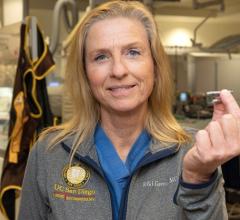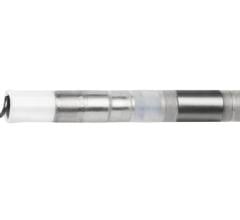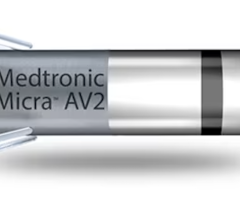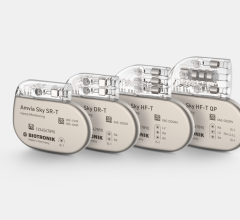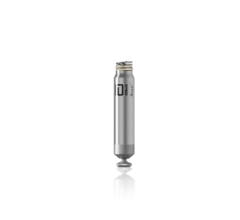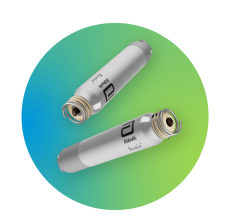
William T. Abraham, M.D., FACP, FACC, director of the Division of Cardiovascular Medicine at Ohio State University Medical Center
Five million Americans are affected by heart failure and approximately 400,000 new cases in the U.S. are diagnosed each year, according to the Heart Failure Society of America — that figure quadruples globally, and many do not know they have a heart failure condition until they are hospitalized.
Today, new devices are commercially available to help physicians treat and save more of these patients whose hearts have stopped pumping properly, often as a result of heart attack damage. And while early action may require a few extra days of hospitalization, the long-term benefits of reduced re-admissions and increased patient survivals are incalculable.
Traditionally, patients with heart failure are treated with a cocktail of medications ranging from beta blockers to diuretics — but in recent years a new therapy has emerged: Cardiac Resynchronization Therapy (CRT) can improve and relieve chronic heart failure symptoms and re-establish proper coordination between the heart's atria and ventricles.
According to Tracy McNulty, a Medtronic spokesperson, in as many as 30 percent of advanced heart failure patients — or 10 percent of all people with heart failure — the two lower chambers (ventricles) of the heart no longer contract at the same time.
Medtronic has developed a family of CRT implantable devices that will regulate the heart as well as monitor other related heart events that are associated with the worsening of heart failure. In most cases, patients receive a CRT device, such as Medtronic's latest, the Concerto CRT-D, on an elective basis.
However, some thought leaders, including William T. Abraham, M.D., FACP, FACC, director of the Division of Cardiovascular Medicine at Ohio State University Medical Center, believe that early CRT device placement at the time of hospitalization, before heart failure worsens, can reduce the chances of death and heart failure-related rehospitalizations.
Dr. Abraham also indicates that “over time [the CRT device] makes an enlarged and failing heart smaller and stronger again, [improving] not only the function, but also the structure of the heart.”
Follow-Up Comes Too Late for Too Many
Traditionally, the standard of care for patients admitted to the hospital with heart failure has been diuretics and observation. Patients are usually discharged between four and six days following admission and receive follow-up within a month. However, the death rate from heart failures within the first 30 days following hospital discharge is staggering — in the range of 10 to 15 percent, states Dr. Abraham. This statistic increases to 50 percent at 60 to 90 days when nonmedical and CRT interventions are not taken.
Dr. Abraham advocates early implantation of CRT devices while patients are hospitalized the first time. He notes that the patient stays in the hospital six days on average. During this period of time the physician has the opportunity not only to administer the medications, but also to implant a CRT.
In the past, hospital economics played a part in the decision to not implant a CRT device during the initial hospitalization for heart failure, notes Dr. Abraham.
“There's financial disincentive for the hospital to implant a CRT device during the initial admission because there are separate DRGs for both.”
The hospitals make more money by staging heart failure care and by bringing the patient back to the hospital for a follow-up visit within 30 days. However, “the risk of death also increases in the most severe cases,” according to Dr. Abraham.
Dr. Abraham indicates that several studies support early implantation of CRT devices in moderate to severe heart failure cases because it increases life expectancy and improves quality of life and the function of the heart. He also indicates that less than five percent of patients who are hospitalized for heart failure receive a CRT device during their stay, even though he and other thought leaders believe that 30 to 40 percent of heart failure hospitalized patients might be eligible for this therapy.
Furthermore, Dr. Abraham indicates that when CRT devices are used in combination with medications, such as ACE inhibitors and beta blockers, patient survival rates go up.
“ACE inhibitors alone increase the relative survival by 10 to 15 percent and when beta blockers are added to the regimen of ACE inhibitors,” he indicated, “the 'relative survival rate' further increases by an additional 30 percent.”
Accordingly, when a CRT device is implanted, the survival rate goes up by yet another 30 percent. All together this equates to an increase in survival of 70 to 75 percent. Dr. Abraham is a strong believer in the combination approach, because the medication regimen and the CRT device complement one another.
New Study Results
At this year's ACC meeting, Dr. Abraham presented data on behalf of the investigators from the Organized Program to Initiate Life-Saving Treatment in Hospitalized Patients with Heart Failure (or OPTIMIZE-heart failure). The objective of the study was to determine whether a link existed between CRT device placement and early clinical outcomes in patients hospitalized for heart failure. Other important results that they hoped to demonstrate included how early implantation improved medical care and ways to provide a better understanding of the benefits of treating patients with ACE inhibitors and beta blockers.
Over 1,000 patients received a CRT device in the OPTIMIZED study and all patients were placed on medications upon admission to the hospital regardless of whether they received a CRT device. The majority received the standard of care (diuretics), along with ACE inhibitors and beta blockers. In fewer than 50 percent of admissions, aldosterone antagonists, ARBs and digoxins were administered. At discharge, all patients were sent home with ACE inhibitors, beta blockers and diurectics. The mean hospital stay for both groups was similar — about four days. Mortality rates were higher in the non-CRT placement group.
Dr. Abraham indicates that “30 to 40 percent of patients that are eligible for CRT would benefit” from having the procedure performed during heart failure hospitalization. And although some patients — those with more severe heart failure — might have to stay in the hospital a few extra days, those few extra days pay off in the long run.
“During the 60- to 90-day follow-up, there were significantly fewer rehospitalizations in patients with CRT placement and a trend for lower mortality,” concluded Dr. Abraham.
He also noted that 80 to 90 percent of patients who receive a CRT are receiving a combination device — a CRT with a built-in defibrillator. Industry sources estimate that nearly 40 percent of heart failure patients also have an arrhythmia and would benefit from having a combination device implanted.
According to McNulty, cardiac resynchronization therapy is designed to coordinate the contraction of the heart's two lower chambers and improve the heart's efficiency to increase blood flow to the body.
The company has pioneered many of the advancements in CRT technology, having initiated its first clinical studies for CRT devices in 1997 outside the U.S.; its first CRT implantation in this country took place in 1998.
Medtronic was the first medical device company to receive FDA approval for a CRT device, and is now joined in the CRT market by St. Jude Medical and Boston Scientific Cardiac Rhythm Management (formerly Guidant). Medtronic's CRT pacemaker, the InSync, was approved by the FDA in August 2001. Less than a year later, Medtronic received FDA approval for the InSync ICD, a combination CRT device and implantable cardioverter defibrillator.
Between 2002 and 2006, the company introduced four more InSync CRT defibrillators (or CRT-Ds), and has also launched the Concerto CRT-D this year.
What distinguishes Medtronic's CRT devices from those of their competitors is that the company pioneered much of the CRT technology and has introduced some very beneficial and innovative CRT features. What's more, all of Medtronic's CRT models are compatible with its CareLink Network.
As Medtronic's CRT-D technology evolved, the newer devices have included increasingly sophisticated features. The latest CRT-D models — the InSync Sentry and Concerto — boast proprietary Medtronic technology, called Optivol Fluid Status Monitoring. Concerto also comes equipped with a wireless telemetry feature called Conexus with SmartRadio. According to McNulty, the Conexus Wireless Telemetry with SmartRadio allows for the transmission of patient and device data remotely, automatically and wirelessly to a physician.
Medtronic's family of CRT devices also offer a Left Ventricular Capture Management system, which helps patients with changing left ventricular (LV) thresholds or micro LV lead dislodgements.
What it Means to Patients
Dr. Abraham indicates that CRT treatment has improved the lives of many heart failure patients. He noted in his ACC 2006 presentation that more than 4,000 chronic heart failure patients have been evaluated in randomized controlled trials.
“Clinical trials should be performed to confirm that CRT placement during heart failure hospitalization confers early patient benefit,” he said, emphasizing that when patients receive a CRT device during heart failure hospitalization their risk for death or rehospitalization in the next 60 days decreases significantly.
McNulty points to the thousands of patient lives that have already been saved or improved as a direct result of the “rapid adoption of this therapy.” Medtronic is also working toward “better understanding [of the] economic value” of this therapy. Heart failure is a costly disease and, says McNulty, Medtronic wants to make sure that medical professionals can rely on its technologies when they are making choices for their patients.
“Our OptiVol feature can enable better management of heart failure, potentially reducing hospitalization costs,” said McNulty. She also points to Medtronic's CareLink network, which she says, can improve heart failure patient outcomes. Combining a CRT device with a defibrillator also helps reduce costs.
“Defibrillating shocks have costs as patients visit emergency rooms, so we've developed features like ATP During Charging that can shift life-saving therapy from shocks to painless anti-tachycardia pacing, and we've invested in clinical studies to determine just which programming methods will encourage the same shift.”



 May 02, 2025
May 02, 2025 
